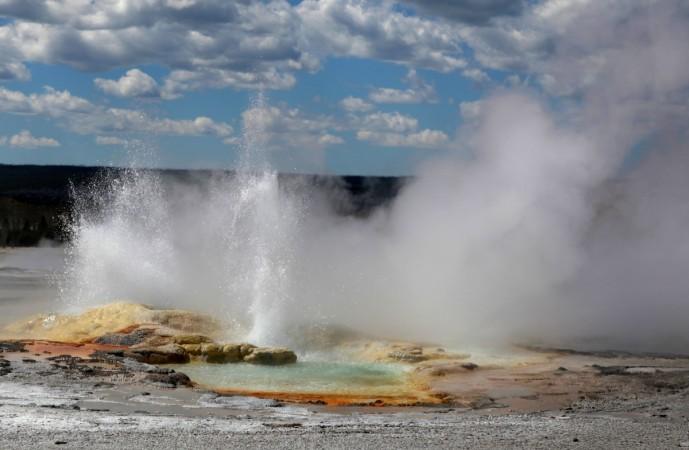
Researchers had earlier revealed that the supervolcano sitting under Yellowstone National Park in the US could erupt sooner than expected. But new evidence sheds light on the last eruption that occurred 630000 years ago and what happened after that.
The new study suggests that two powerful eruptions occurred 630000 years ago and 170 years apart. The two powerful eruptions, separated by 170 years, sent a massive amount of ash and sulphur dioxide into the sky blocking the sunlight from reaching Earth's surface and causing the global temperature drop. The eruptions plunged the planet into two distinct volcanic winters.
"We discovered here that there are two ash-forming super-eruptions 170 years apart and each cooled the ocean by about 3 degrees Celsius," Jim Kennett, a geologist at the University of California Santa Barbara, said.
Kennett and his team came to this conclusion after they found two distinct layers of ash "bearing the unique chemical fingerprint of the supervolcano" in the seafloor sediments in the Santa Barbara Basin, off the coast of Southern California.
These layers of ash are squeezed among sediments that hold a geological record of ocean and climate change. The study of ash and sediments together revealed that there two separate super-eruptions that led the planet out of a major ice age also interrupted a natural process of global warming, according to the researchers.
The team also found that the "onset of the global cooling events was abrupt and coincided precisely with the timing of the supervolcanic eruptions, the first such observation of its kind."
Kennett said, "We see planetary cooling of sufficient magnitude and duration that there had to be other feedbacks involved."
"It was a fickle, but fortunate time," Kennett said of the timing of the eruptions. "If these eruptions had happened during another climate state we may not have detected the climatic consequences because the cooling episodes would not have lasted so long."

















